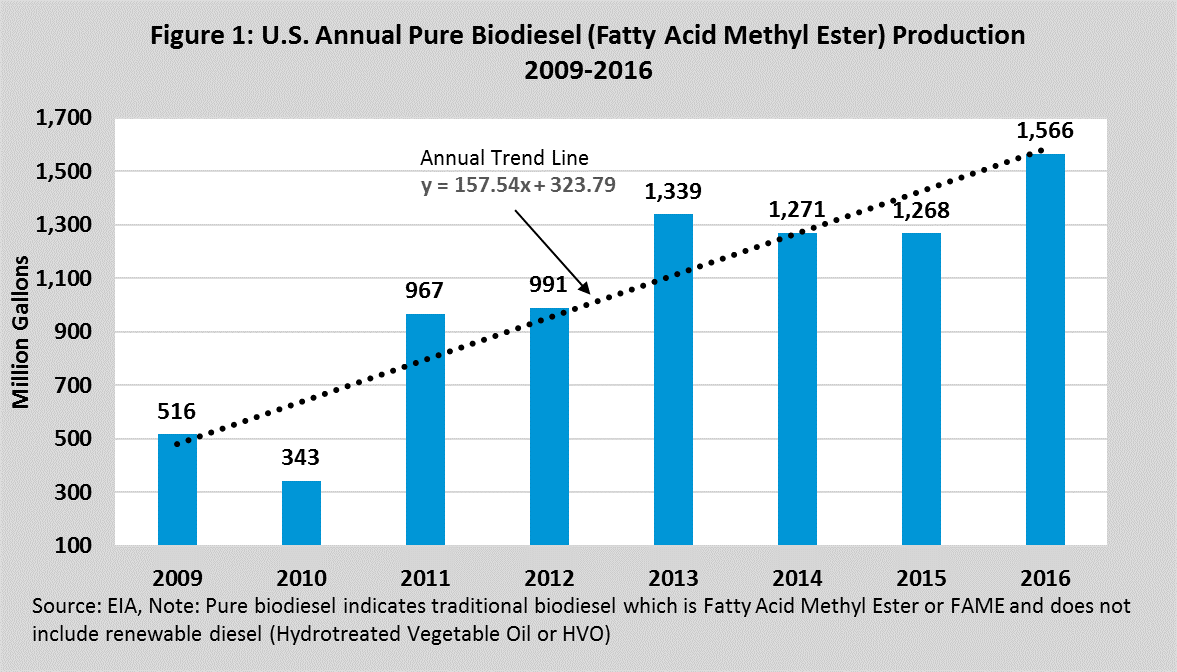Pure or traditional biodiesel is known as Fatty Acid Methyl Ester (FAME) and renewable diesel (also known as Hydrotreated Vegetable Oil or HVO) often are confused. They are both made from organic biomass, but are different products due to their production process and quality attributes.
The U.S. Energy Information Administration publishes only pure FAME-type biodiesel production in its Monthly Biodiesel Production Report. This descriptive analysis only looks at pure FAME-type biodiesel production for the last eight years.

Figure 1 shows the U.S. production of pure biodiesel from 2009 to 2016. The U.S. production of pure biodiesel in 2016 was 1.566 billion gallons based on EIA data released Feb. 28, 2017. Pure biodiesel production during 2016 was 298 million gallons higher than production in 2015, a significant 24 percent increase.
The production in 2013 was 1.339 billion gallons, compared to 0.991 billion gallons in 2012, an increase of 35 percent. This is mainly due to the implementation of a biodiesel blender’s tax credit from the beginning of 2013, which expired at the end of 2013. The total production in 2014 was 1.339 billion gallons, a decrease of 5 percent from 2013. The production in 2015 was 1.268 billion gallons, 3 million gallons short of 2014 production. The production in 2016 is the highest recorded in U.S. history. In 2016, a biodiesel blender’s tax credit was approved, and expired at the end of 2016.
Notice the annual production linear trend line in Figure 1, indicating U.S. pure biodiesel production has increased an average of 157 million gallons each year. Despite the lapsed federal biodiesel blenders tax credit and delayed implementation of the 2017 renewable volume obligations under the Renewable Fuel Standard, the U.S. biodiesel industry will remain strong in the future. More details can be found in the April issue from Iowa State University’s AgMRC renewable energy report.

